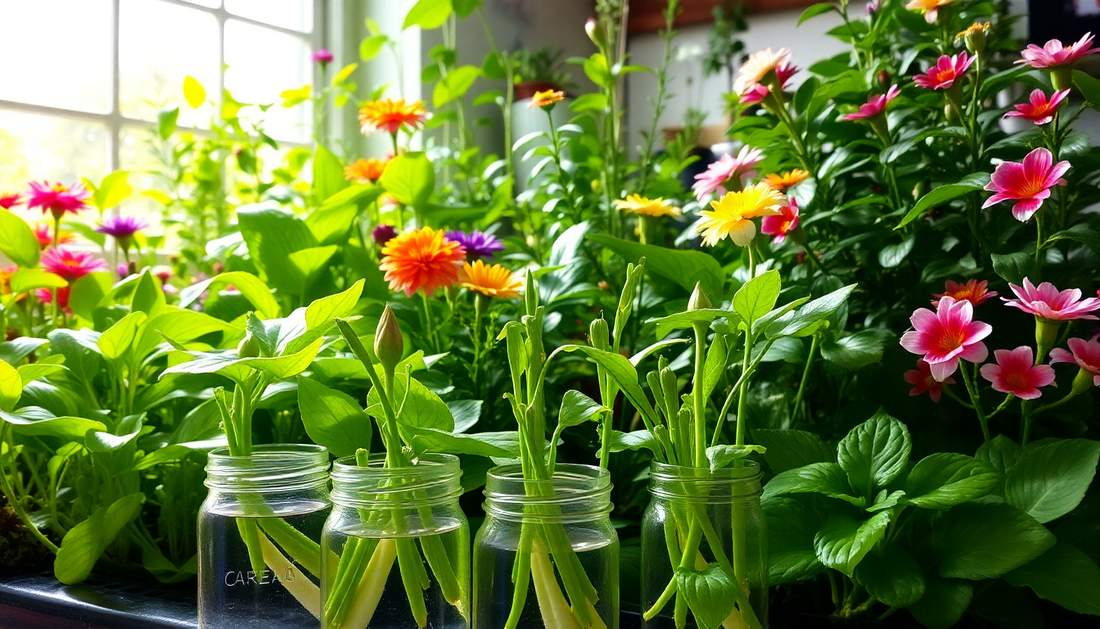
Ornamental Plants That Are Easy to Grow from Cuttings
Share
Growing your own plants from cuttings is a rewarding and cost-effective way to expand your garden. Many ornamental plants can be easily propagated this way, allowing you to multiply your favorite specimens or try new varieties without breaking the bank. In this comprehensive guide, we'll explore some of the best ornamental plants that are well-suited for growing from cuttings.
The Benefits of Propagating from Cuttings
Propagating plants from cuttings offers several advantages over growing from seed or purchasing new plants:
-
Cost-Savings: Creating new plants from cuttings is significantly more affordable than buying mature specimens from a nursery. This makes it an excellent option for gardeners on a budget.
-
Consistency: When you grow a plant from a cutting, you know exactly what you're getting - an identical clone of the parent plant. This ensures the new growth will have the same desirable traits as the original.
-
Faster Maturity: Cuttings often establish roots and begin growing more quickly than seedlings, allowing you to enjoy the mature plant sooner.
-
Preservation of Rare or Unique Varieties: For hard-to-find cultivars or heirloom plants, propagation by cuttings is an effective way to multiply and preserve those special specimens.
Top Ornamental Plants for Cuttings
Not all plants root equally well from cuttings, but there are many beautiful ornamentals that thrive when propagated this way. Here are some of the best options to try in your garden:
Succulents
Succulents like echeveria, jade plants, and sedum are incredibly easy to propagate from stem or leaf cuttings. Simply allow the cut end to callus over for a few days, then plant the cutting in well-draining soil. Water sparingly and within a few weeks, you should see new growth emerging.
Geraniums
These vibrant, long-blooming flowers are a classic choice for cutting propagation. Take 4-6 inch stem cuttings just below a leaf node, remove the lower leaves, and plant them in moist potting mix. Geraniums root quickly and reliably.
Coleus
The bold, colorful foliage of coleus makes it a popular ornamental plant. Propagating coleus is a breeze - simply take stem cuttings and root them in water or soil. They'll quickly establish themselves as new plants.
Fuchsias
These delicate, cascading flowers can be easily multiplied by taking softwood stem cuttings in spring or early summer. Fuchsias root readily and will provide you with an abundance of new plants.
Impatiens
Whether you prefer the classic New Guinea impatiens or the vibrant, shade-loving New Guinea varieties, these plants can be readily propagated from stem cuttings. They'll reward you with continuous color all season long.
Begonias
There are many different types of begonias, from the waxy-leaved wax begonias to the large, showy tuberous begonias. Most are easy to root from stem or leaf cuttings, making them a great choice for DIY propagation.
Ivy
Trailing ivies like English ivy and Swedish ivy are incredibly simple to propagate. Just take a stem cutting, remove the lower leaves, and place it in water or soil. Ivy cuttings will quickly develop roots and new growth.
Philodendrons
These lush, tropical-looking houseplants can also be grown outdoors in warm climates. Philodendrons root readily from stem cuttings, allowing you to multiply your collection with ease.
Tradescantia
Also known as wandering jew, this fast-growing, trailing plant is a cinch to propagate from stem cuttings. It roots quickly and the new plants will soon trail beautifully over the edges of containers or hanging baskets.
Peperomia
The thick, succulent-like leaves of peperomia make them an ideal candidate for propagation. You can root new plants from leaf or stem cuttings, and they'll quickly establish themselves as low-maintenance additions to your indoor or outdoor spaces.
Tips for Successful Propagation
No matter which ornamental plants you choose to propagate, there are a few key tips that will help ensure your cuttings take root and thrive:
-
Take Cuttings at the Right Time: For most plants, the best time to take cuttings is in the spring or early summer when the plant is actively growing. Avoid cuttings during the winter dormancy period.
-
Use Sharp, Clean Pruners: Make clean, straight cuts on your cuttings to minimize damage and promote faster rooting.
-
Prepare the Cuttings Properly: Remove any flowers, flower buds, or lower leaves from the cuttings. This helps the plant focus its energy on root development.
-
Use a Rooting Hormone: Applying a rooting hormone powder or gel to the cut end of the cutting can significantly improve your success rate, especially for more challenging plants.
-
Provide the Right Growing Conditions: Cuttings need high humidity, bright indirect light, and consistently moist (but not soggy) soil to root effectively. Consider using a propagation tray or humidity dome to maintain the ideal environment.
-
Be Patient and Observe: It can take several weeks for roots to form on cuttings. Resist the urge to disturb them, and keep an eye out for signs of new growth, which indicates successful rooting.
With these tips and the right ornamental plants, you can easily expand your garden through the rewarding process of propagation. Happy cutting and growing!
